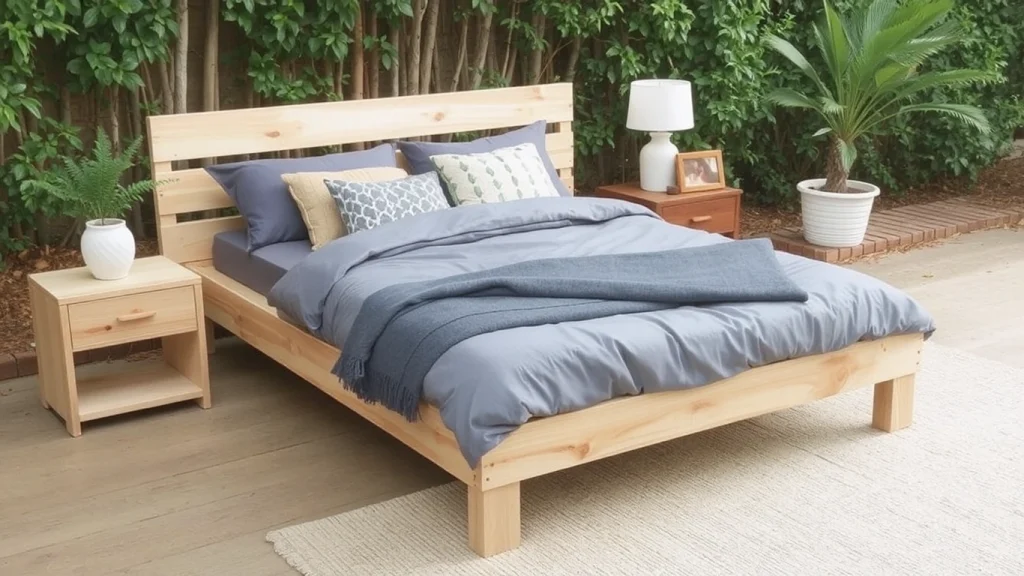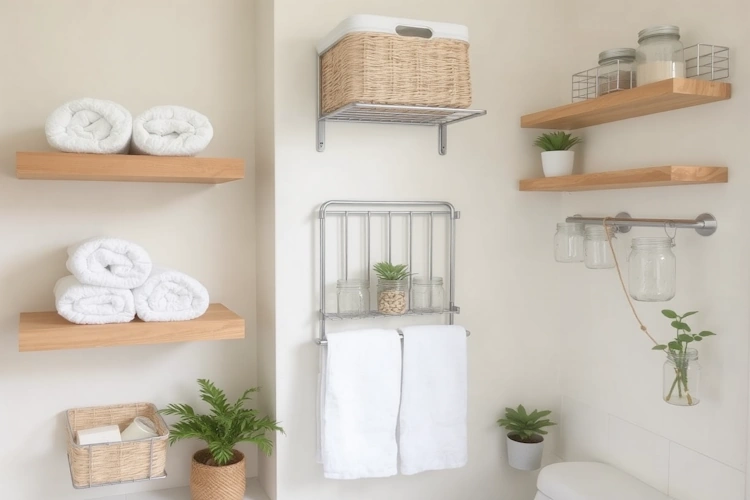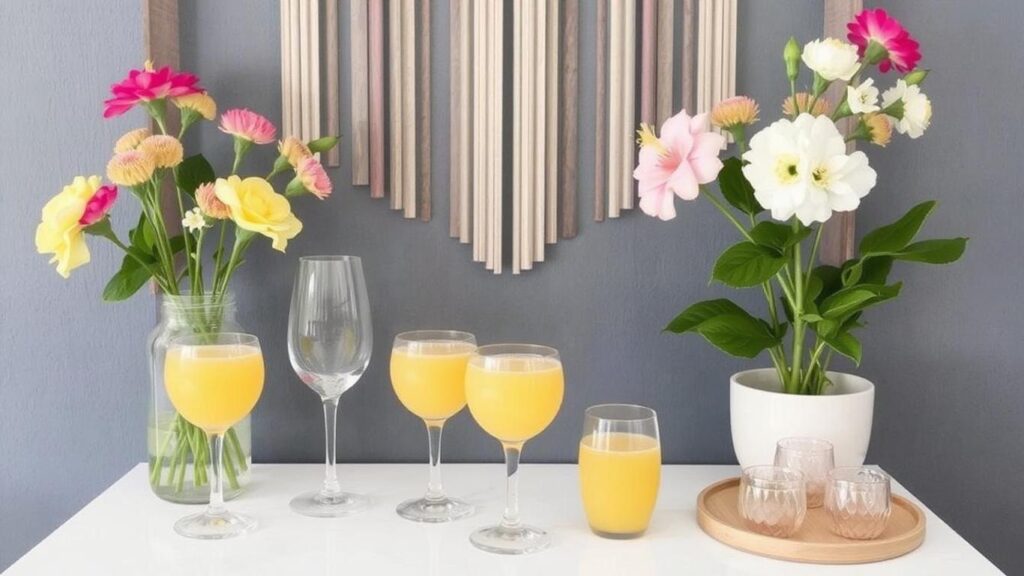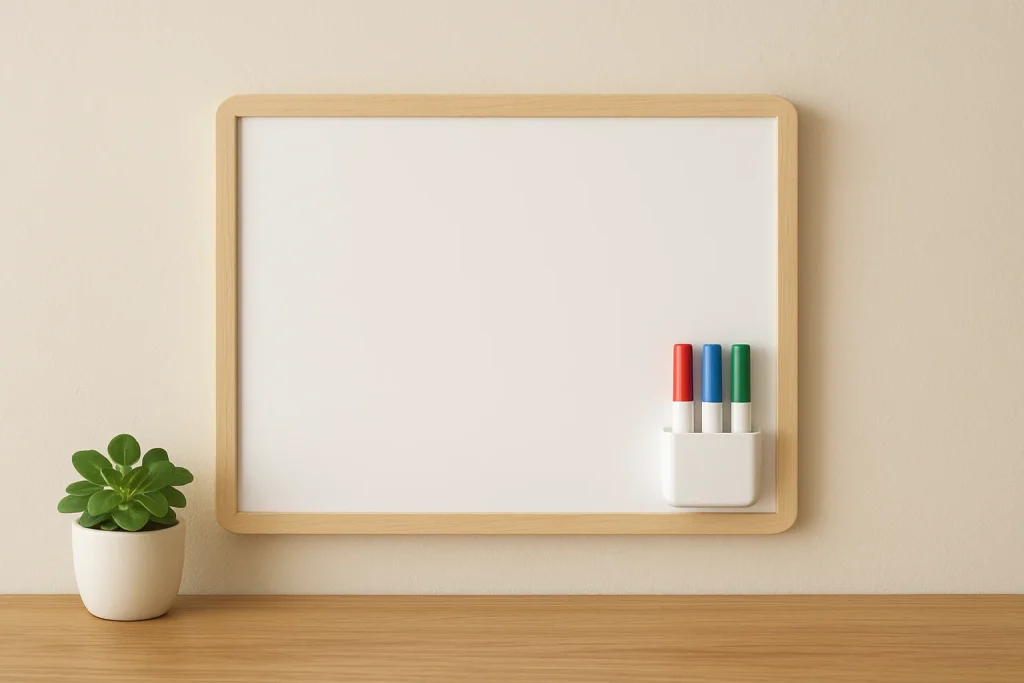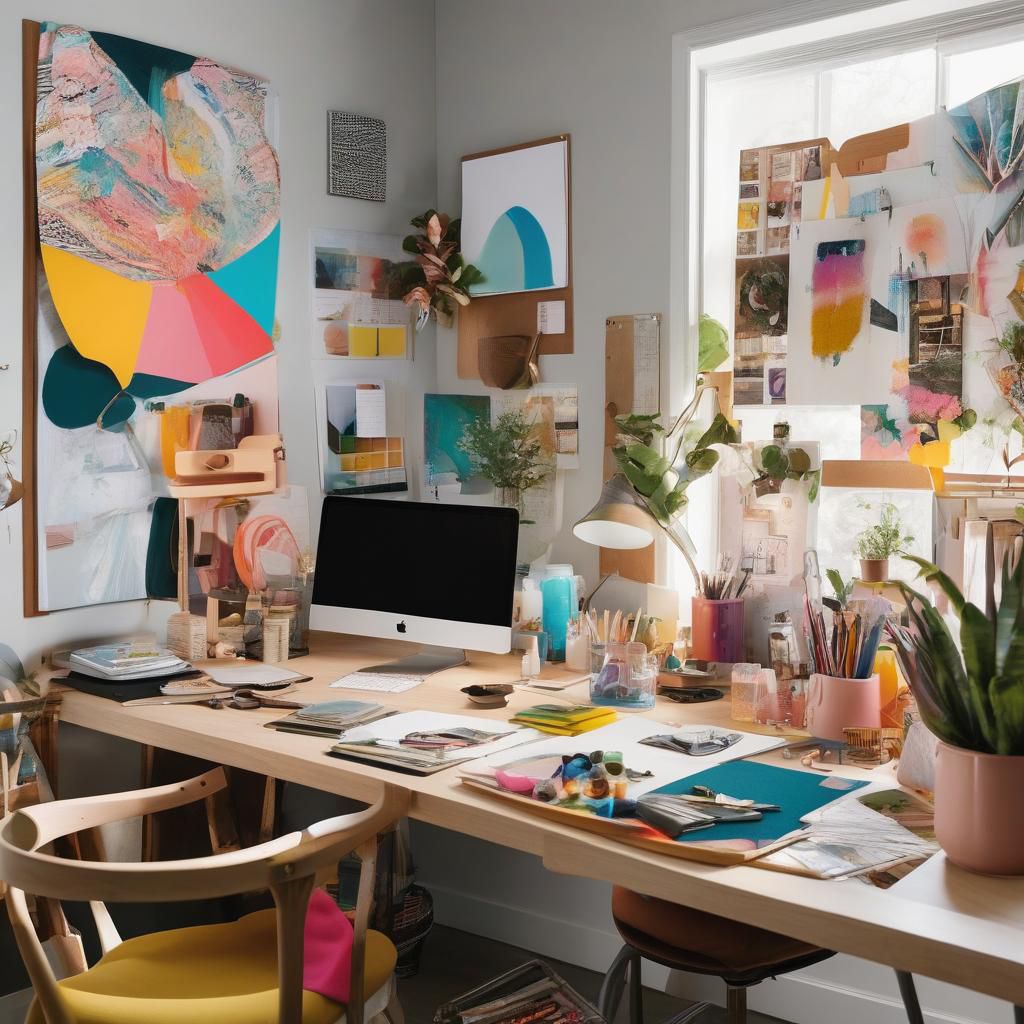DIY $15 Chunky Wooden Floating Shelves
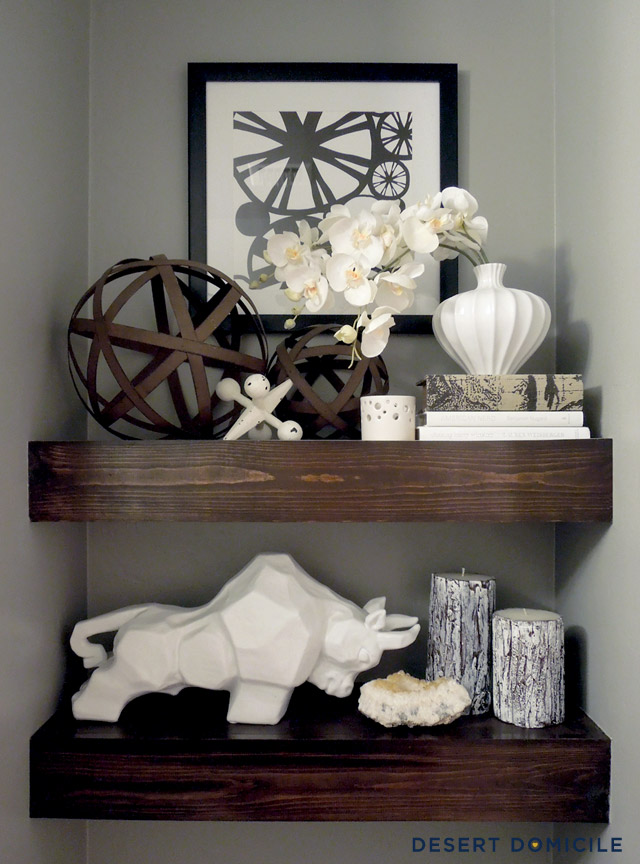
Since this post, I’ve painted our powder room and updated the shelf styling. Here’s what they look like today:


If you’re looking to build a set of freestanding shelves instead, check out our second shelf tutorial to make a set of shelves with sides like the ones we built in our hallway:

Back to the tutorial 🙂
Wayyy back in July, I showed you the plans we had for our powder room:
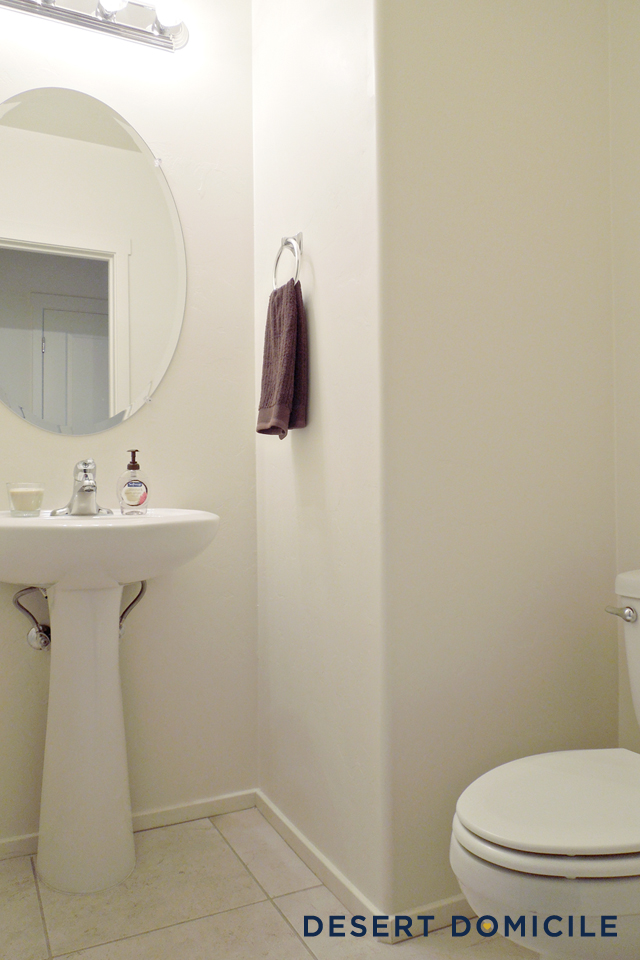
Those plans involved adding some chunky floating shelves above the toilet:

Two months later, those shelves have finally been added:


But let’s back up for a minute so I can show you how we made them 🙂
Before we started building the shelves, I rough sketched a drawing of how I wanted them to look. Since my sketches make no sense to anyone but me, I’ve “translated” it into something you can (hopefully) understand:
Top view:

This is what I envisioned the shelves looking like if you were a giant that was looking straight down on them. I wanted to build a hidden inner frame that the top and bottom boards could sit on/screw into.
Side view:

To make everything look as seamless as possible, I wanted the width of the top board (AKA top of the shelf), hidden side support brace boards, and bottom board (AKA the bottom of the shelf) to equal the height of the front piece (AKA the front of the shelf) so that when everything was put together, each shelf would look like one chunky piece of solid wood.
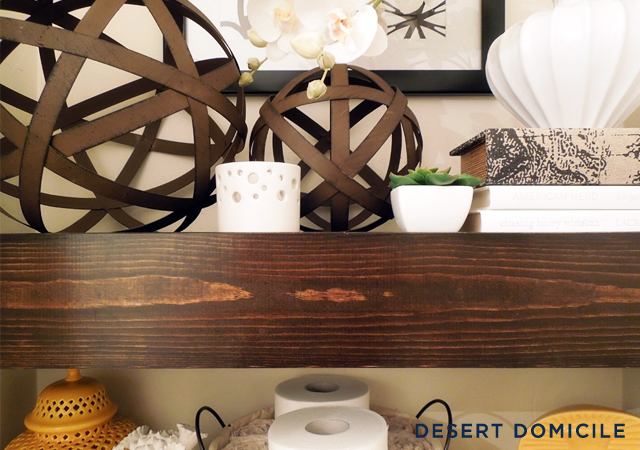
Once we had an idea of how the shelves were going to be built, we headed to Lowe’s to get our supplies. We spent over an hour in the store deciding on what kind of wood to buy, what cuts needed to be made in the store (so we could get the wood in my car), and how thick to make the shelves.
When we finally figured everything out, we bought the following:

• Front pieces: 1, 1x6x6 whitewood board
We had our board cut into 2, 31 3/4″ pieces (the width of our wall) and then we had each of those pieces ripped down to 4″ (the height/thickness of our shelves).
• Top and bottom pieces: 1, 1x10x12 whitewood board
We had our board cut into 4, 31 3/4″ pieces (2 for each shelf).
• Hidden inner frame: 2, 1x3x8 furring strips (we only used 1 1/2 furring strips)
We cut the following pieces at home: 2, 31 3/4″ back support pieces, 4, 8″ side support pieces (2 for each shelf), and 6, 8″ middle support pieces (3 for each shelf).
TIP: Don’t forget to buy screws/nails and stain/poly if you don’t have any at home!
Sidenote: Even though they looked OK in the store, the furring strips we bought weren’t the same width so it was difficult to make the hidden inner frame pieces an equal height all around. If I were to build the shelves all over again, I would purchase a different type of wood to make the inner frame with. Just something to keep in mind if you decide to build these shelves yourself 🙂
After we cut the furring strips into 8″ pieces, we started to build the two hidden inner frames. Each frame required one 31 3/4″ back piece, 2, 8″ side support pieces and 3, 8″ middle support pieces.
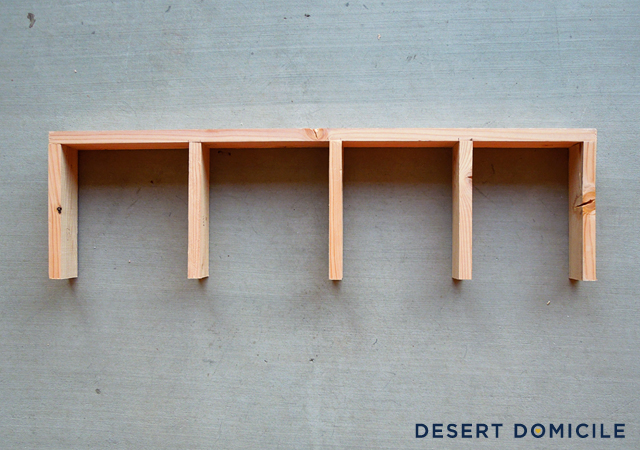
To assemble the hidden inner frames, we used wood screws to screw each of the 8″ furring strip support pieces into the back support piece from the back. We made sure that the side pieces were lined up with the edge of the back piece but we didn’t worry about the spacing of the middle support pieces since no one would see them and we weren’t planning on putting heavy objects on the shelves anyway.
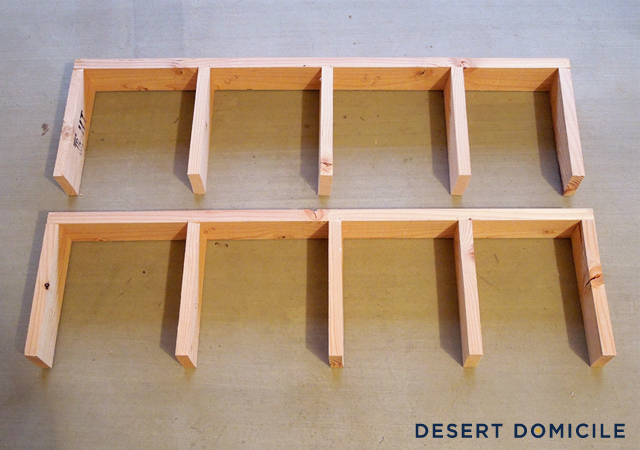
After both of the hidden inner frames were built, it was time to attach them to the wall. To figure out the placement of the bottom shelf, I measured 4 feet up from the tile floor (no reason, just liked the height) and made a mark. Then I measured 4″ (the overall height of our shelves) up from that line and made another mark.
I stood back to view the placement and liked what I saw so we measured 3/4″ (the thickness of our top shelf) down from the top line and another 3/4″ (the thickness of our bottom shelf) up from the bottom line to mark our placement for the hidden inner frame.
Once all of our measurements were marked on the wall, we placed the inner frame in between the two middle marks and my boyfriend started screwing it into the wall:

TIP: Make sure you leave plenty of clearance around your plumbing pipes so you don’t screw into them!
After everything was secured into the walls (remember to screw in the side support pieces!), we set the top board for the shelf on the newly mounted frame to see what it would look like:
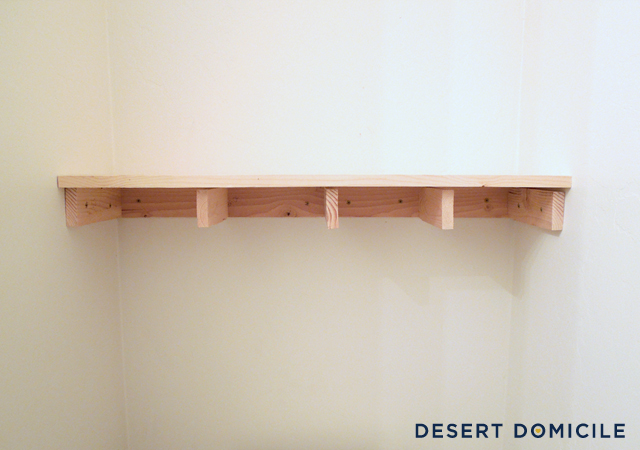
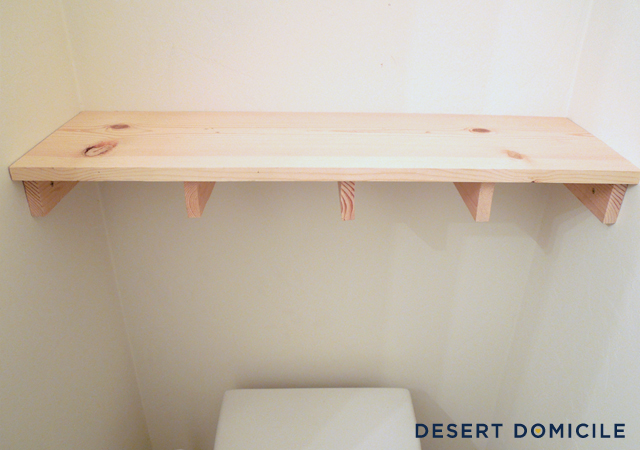
So far so good!
After we had the first hidden inner frame hung, we measured 12″ from the top line we marked earlier and made another mark for the bottom of the upper shelf. Then we measured 4″ up from that mark for the top of the upper shelf. From there we measured 3/4″ (the thickness of our top shelf) down from the top line and another 3/4″ (the thickness of our bottom shelf) up from the bottom line to mark our placement for the second hidden inner frame.
We repeated the same hanging steps above to mount the second hidden inner frame to the wall and once it was up, things looked like this:

If you squint, you can kind of see shelves haha
At this point, I did a test fit of each of the top and bottom shelf pieces since my pieces of whitewood were bowed and I didn’t want to stain one side of the wood only to find out that it didn’t fit where I had planned on putting it. Once I had all of the pieces labeled, I took them out to the garage to stain them dark walnut:

I let the stain sit for 20 minutes on each piece before wiping it off. After everything was stained, I let the boards dry overnight. The next morning I took them outside so I could spray lacquer them (try not to be jealous of my awesomely landscaped yard 😉 ):
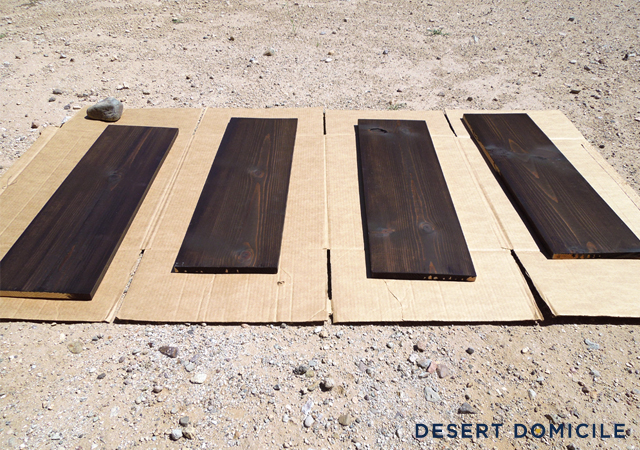
I didn’t poly them because poly and I don’t get along very well but if you and poly are BFF’s, skip this lacquering step and use poly instead 🙂
Anyway…
An hour later the lacquer had dried which meant that it was time to attach the top and bottom shelves to the hidden inner frame. I attached the top of the lower shelf first by flipping the board over to the non-stained side and running a small band of wood glue around all of the edges EXCEPT for the front edge. Then I flipped the board over, set it in place and pressed down making sure the top made contact with the back and side supports.
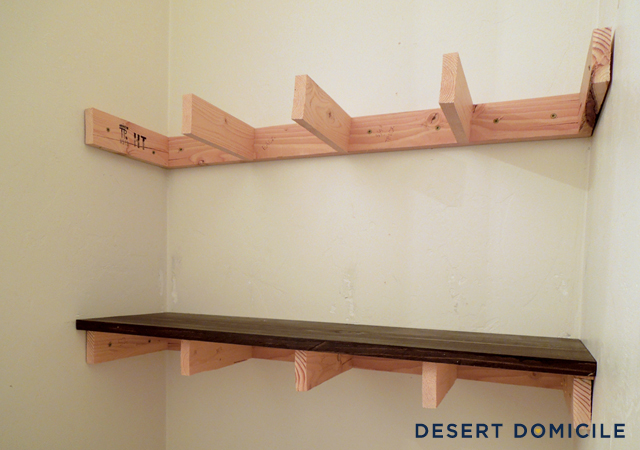
After the wood glue set up and the shelf was no longer wiggly, I hammered in a few finishing nails along the back edge of the shelf. In hindsight, this step wasn’t necessary since the wood glue did an excellent job of holding the top in place and hammering the nails in damaged my walls 🙁

To attach the bottom shelf, I used the same wood screws I used to screw the hidden inner frame into the wall. I held the board up underneath the frame (stain side out) and screwed one screw into the center middle support. Then I screwed 1 screw into the remaining 2 middle supports and 1 screw into each side support for a total of 5 screws. I made sure to set the screws back about halfway from the front so they wouldn’t be visible when looking at the shelves.
After the first shelf was done, I repeated the same steps to attach front and bottom boards to the second shelf except this time around, I skipped hammering nails into the top board of the shelf:
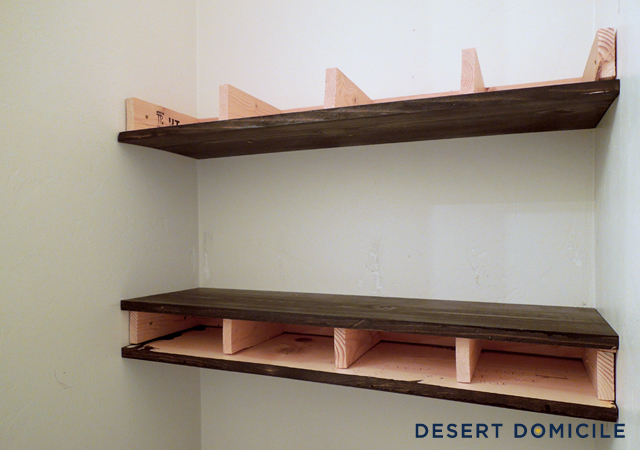

Funny story: see that mark on the top left side support?

It says “Audited by TP HT” but every time I read it, I said “TP H(u)T” which I found hilarious since the shelves would be acting as a hut for extra TP haha
Anyway, moving on…
When the second shelf was finished, it was time to attach the front facing piece to each shelf. In order for the shelves to look as professional and seamless as possible, I knew I couldn’t use nails or screws so I used wood glue for the top shelf’s front piece and Liquid Nails for the bottom shelf’s front piece. More on that in a minute.
I attached the top shelf’s front piece first by flipping it over and running a small band of wood glue along all of the edges:

Then I lined the bottom edge of the front piece up with the bottom edge of the shelf. I wanted these edges to match perfectly since it’s what people would see at eye-level. Once they were even, I pressed the front piece against the rest of the shelf and held it for what felt like forever (Note to self: buy clamps!). Some wood glue did seep out the bottom so I had my boyfriend grab me some damp paper towels that I could use to wipe the glue up with.
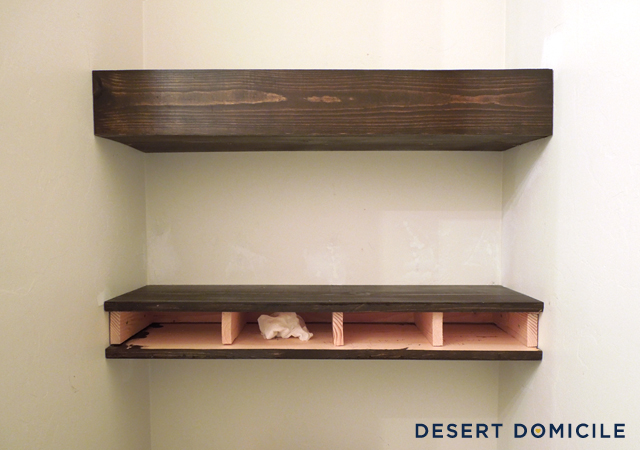
After about 20 minutes, the top shelf’s front piece was pretty much stuck in place so I let go of it and moved on to attaching the lower shelf’s front piece.
Like I said above, I used Liquid Nails to attach this piece. Why? Well I tried using the same wood glue I used on the top shelf’s front piece but no matter how hard I pressed on the board or how long I held it in place, it kept slipping and eventually fell off. When it fell, I realized that the board was bowed so much that the bottom edge wasn’t even touching the bottom shelf’s edge so I broke out the Liquid Nails, ran a bead of it along each edge, held my breath, and pressed it in place. I made sure that the top edge of the front piece matched the top of the shelf perfectly and then pressed the board into place for another 20 minutes. When I let go this time, the front piece was stuck in place!
I waited 24 hours before I put anything on the shelves just to make sure they weren’t going to come crashing down. Once I realized they weren’t going anywhere, I styled them up as pretty as possible 🙂
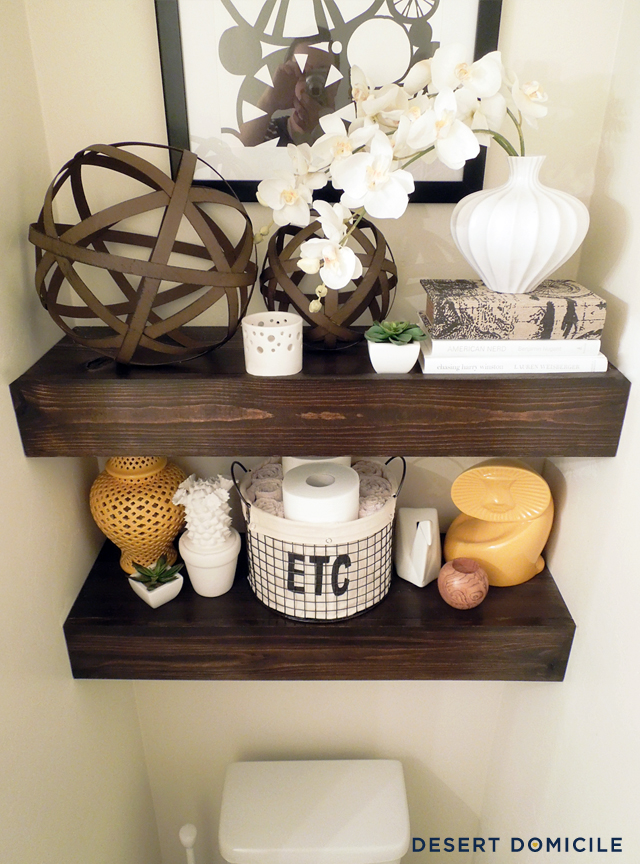



How about a little before and after action?
Before:

After:

Budget breakdown:
- Front pieces: 1, 1x6x6 whitewood board: $5.25
- Top and bottom pieces: 1, 1x10x12 whitewood board: $20.15
- Hidden inner frame: 2, 1x3x8 furring strips (we only used 1 1/2 furring strips): $1.78 each x 2 = $3.56
- Dark Walnut stain: Already owned
- Wood screws: Already owned
- Wood glue: Already owned
- Tools (Miter saw, drill, tape measurer, level, pen, etc.): Already owned
TOTAL: $28.96 or $14.48 each shelf! Not too bad, huh?
Note: this project may cost you more than $28.96 depending on the supplies you need to purchase and where you purchase them from.
What do you think of the shelves? Did you start a drinking game for every time I said “hidden inner frame”? I can’t blame you if you did, I said it 13 times haha
Disclaimer: I can’t guarantee that your shelves will turn out just like mine. Differences in materials and tools used, and your skill level, will yield different results. I cannot be held responsible for a failed project or an injury of any kind so proceed with caution and build at your own risk. Remember: always use caution when working with power tools and read any instructions before beginning any project.
I’m sharing this project on: AKA Design, Alderberry Hill, DIY By Design, DIY Showoff, Fireflies and Jellybeans, House of Hepworths, House on the Way, Not JUST A Housewife, Shabby Nest, and The Shabby Creek Cottage.
